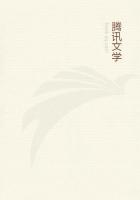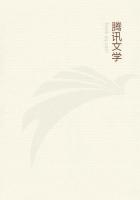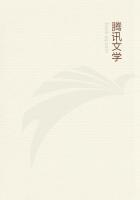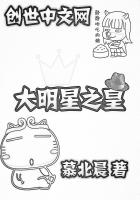In different plants the parts of the flower are homologous, and in general these parts are regarded as homologous with leaves. HOMOPTERA An order or sub-order of Insects having (like the Hemiptera) a jointed beak, but in which the fore-wings are either wholly membranous or wholly leathery. The Cicadoe , Frog-hoppers, and Aphides , are well-known examples. HYBRID The offspring of the union of two distinct species. HYMENOPTERA An order of insects possessing biting jaws and usually four membranous wings in which there are a few veins. Bees and Wasps are familiar examples of this group. HYPERTROPHIED Excessively developed. ICHNEUMONIDÆ A family of Hymenopterous insects, the members of which lay their eggs in the bodies or eggs of other insects. IMAGO The perfect (generally winged) reproductive state of an insect. INDIGENS The aboriginal animal or vegetable inhabitants of a country or region. INFLORESCENCE The mode of arrangement of the flowers of plants. INFUSORIA A class of microscopic Animalcules, so called from their having originally been observed in infusions of vegetable matters. They consist of a gelatinous material enclosed in a delicate membrane, the whole or part of which is furnished with short vibrating hairs (called cilia), by means of which the animalcules swim through the water or convey the minute particles of their food to the orifice of the mouth. INSECTIVOROUS Feeding on Insects. INVERTEBRATA, or INVERTEBRATE ANIMALS Those animals which do not possess a backbone or spinal column. LACUNÆ Spaces left among the tissues in some of the lower animals, and serving in place of vessels for the circulation of the fluids of the body. LAMELLATED Furnished with lamellæ or little plates. LARVA(pl LARVÆ). The first condition of an insect at its issuing from the egg, when it is usually in the form of a grub, caterpillar, or maggot. LARYNX The upper part of the windpipe opening into the gullet. LAURENTIAN A group of greatly altered and very ancient rocks, which is greatly developed along the course of the St. Laurence, whence the name. It is in these that the earliest known traces of organic bodies have been found. LEGUMINOSÆ An order of plants represented by the common Peas and Beans, having an irregular flower in which one petal stands up like a wing, and the stamens and pistil are enclosed in a sheath formed by two other petals. The fruit is a pod (or legume). LEMURIDÆ A group of four-handed animals, distinct from the Monkeys and approaching the Insectivorous Quadrupeds in some of their characters and habits. Its members have the nostrils curved or twisted, and a claw instead of a nail upon the first finger of the hind hands. LEPIDOPTERA An order of Insects, characterised by the possession of a spiral proboscis, and of four large more or less scaly wings. It includes the well-known Butterflies and Moths. LITTORAL Inhabiting the seashore. LOESS A marly deposit of recent (Post-Tertiary) date, which occupies a great part of the valley of the Rhine. MALACOSTRACA The higher division of the Crustacea, including the ordinary Crabs, Lobsters, Shrimps, &c., together with the Woodlice and Sand-hoppers. MAMMALIA The highest class of animals, including the ordinary hairy quadrupeds, the Whales, and Man, and characterised by the production of living young which are nourished after birth by milk from the teats ( Mammoe, Mammary glands ) of the mother. A striking difference in embryonic development has led to the division of this class into two great groups; in one of these, when the embryo has attained a certain stage, a vascular connection, called the placenta , is formed between the embryo and the mother;in the other this is wanting, and the young are produced in a very incomplete state. The former, including the greater part of the class, are called Placental mammals ; the latter, or Aplacental mammals , include the Marsupials and Monotremes ( Ornithorhynchus ). MAMMIFEROUS Having mammæ; or teats (See MAMMALIA). MANDIBLES, in Insects The first or uppermost pair of jaws, which are generally solid, horny, biting organs. In Birds the term is applied to both jaws with their horny coverings. In Quadrupeds the mandible is properly the lower jaw. MARSUPIALS An order of Mammalia in which the young are born in a very incomplete state of development, and carried by the mother, while sucking, in a ventral pouch (marsupium), such as the Kangaroos, Opossums, &c. (see MAMMALIA). MAXILLÆ, in Insects The second or lower pair of jaws, which are composed of several joints and furnished with peculiar jointed appendages called palpi, or feelers. MELANISM The opposite of albinism; an undue development of colouring material in the skin and its appendages. METAMORPHICROCKS Sedimentary rocks which have undergone alteration, generally by the action of heat, subsequently to their deposition and consolidation. MOLLUSCA One of the great divisions of the Animal Kingdom, including those animals which have a soft body, usually furnished with a shell, and in which the nervous ganglia, or centres, present no definite general arrangement. They are generally known under the denomination of `shell-fish;' the cuttle-fish, and the common snails, whelks, oysters, mussels, and cockles, may serve as examples of them. MONOCOTYLEDONS, or MONOCOTYLEDONOUS PLANTS Plants in which the seed sends up only a single seed-leaf (or cotyledon);characterised by the absence of consecutive layers of wood in the stem (endogenous growth), by the veins of the leaves being generally straight, and by the parts of the flowers being generally in multiples of three.
同类推荐
热门推荐
绝世无双:上仙请指教
简介:她是魔界公主,他是历劫上仙,自古神魔不两立,她与他的相爱,注定不会有好结果。果不其然,他带着天界诸神攻入魔界,杀她族人,毁她家园。她用自己的血肉灵魂立下诅咒,若他成神,他所爱之人将永世不得好死!命运轮回,她是墨家女,生性活泼善良,却唯独听不得神仙二字。于是再遇上他,总有一种说不出的讨厌,却又不自觉被吸引。“能不能不要再跟着我!”“上天入地,你在哪里,我跟到那里。”其实,他真的很爱她。为她当初那句诅咒,他情愿永不飞升成神。为天界不公,要害她性命,他甘愿就此堕魔。只要能和她一起,是神是魔,又有何妨!tfboys之校缘物语
三个富家千金和三小只的爱情史,大家都给票票哦,包你满意,看它的姐妹篇tfboys之洁雅阳之恋。加群422349819,加作者qq号,1465688890和1870264166,都加啊!花千骨之多情无悔共长留
续妖神大战后,花千骨重生失忆,前世的纠缠,宿敌的复仇,情意的败露,恢复记忆后,她将如何抉择?神界复苏,情敌来临,大劫将至,面对宿命,面对白子画的离开,面对神界的责任,她应怎样应对?

